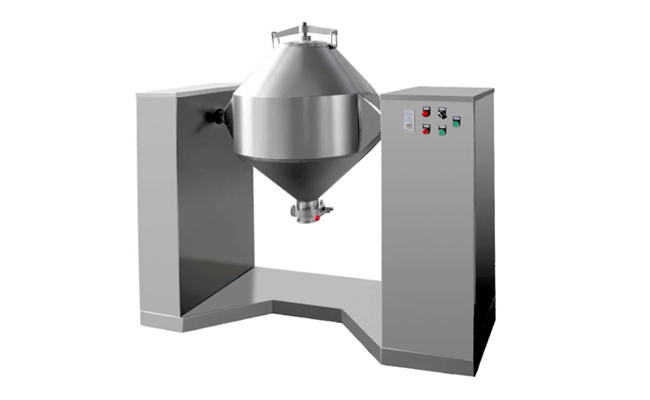GZ4230 Fully Automatic Band Saw Machine
Cutting Capacity :
Dry powder mixing technology is a critical process in industries such as pharmaceuticals, food, chemicals, and construction, directly impacting product uniformity, stability, and final quality. This article delves into the principles, types of equipment, key technical parameters, and industry applications of dry powder mixing to provide a comprehensive understanding of this technology.

1. Overview of Dry Powder Mixing Technology
Dry powder mixing refers to the process of uniformly blending two or more dry powders to ensure consistent distribution of components. This technology is widely used in:
Pharmaceutical Industry: Mixing raw materials for tablets and capsules.
Food Industry: Blending seasonings, milk powder, and nutritional powders.
Chemical Industry: Mixing coatings, pesticides, and plastic additives.
Construction Industry: Proportioning cement, mortar, and ceramic powders.
2. Three Key Principles of Dry Powder Mixing
(1) Diffusion Mixing
Particles randomly disperse under gravity or vibration, suitable for free-flowing powders.
(2) Convective Mixing
Mechanical agitation (e.g., ribbons, paddles) induces bulk movement for rapid mixing.
(3) Shear Mixing
Mechanical forces break up particle agglomerations, ideal for sticky or cohesive materials.
3. Common Dry Powder Mixing Equipment
| Equipment Type | Working Principle | Applications |
|---|---|---|
| V-Mixer | Rotating container for gravity-based mixing | Pharmaceuticals, food (free-flowing powders) |
| 3D Motion Mixer | Multi-directional tumbling for high uniformity | High-precision mixing (e.g., drug formulations) |
| Ribbon Mixer | Ribbon blades for forced convective mixing | Sticky or slightly moist powders |
| Airflow Mixer | Uses air currents to suspend and mix powders | Fragile or heat-sensitive particles |
4. Key Factors Affecting Mixing Efficiency
Mixing Time: Too short leads to uneven mixing; too long may cause segregation.
Rotation Speed: Too high may damage particles; too low reduces efficiency.
Fill Volume: Recommended at 30%–70% of container capacity; overfilling reduces effectiveness.
Material Properties: Particle size, density, shape, and electrostatic charges affect uniformity.
5. Industry Applications of Dry Powder Mixing
(1) Pharmaceutical Industry
Ensures uniform distribution of active ingredients, complying with GMP standards.
Uses 3D or V-mixers to prevent cross-contamination.
(2) Food Industry
Blending seasonings, milk powder, and protein powders.
Requires food-safe, easy-to-clean equipment with no residue.
(3) Chemical Industry
Mixing coatings, dyes, and plastic additives.
High-shear mixers for challenging materials.
(4) Construction Industry
Proportioning cement, mortar, and refractory materials.
Large ribbon or drum mixers are commonly used.
6. Future Trends in Dry Powder Mixing Technology
Smart Control: AI and sensors optimize mixing parameters for consistency.
Continuous Mixing: Replaces batch mixing for higher productivity.
Eco-Friendly Solutions: Dust reduction and energy-efficient equipment gain traction.
Dry powder mixing is a core process in multiple industries, and selecting the right equipment and optimizing parameters is crucial. With advancements in smart and continuous mixing technologies, the future of dry powder mixing promises greater efficiency and precision.
Keywords: Dry powder mixing technology, powder mixing equipment, mixing uniformity, pharmaceutical mixing, food mixing, chemical mixing
Cutting Capacity :
Cutting Capacity :